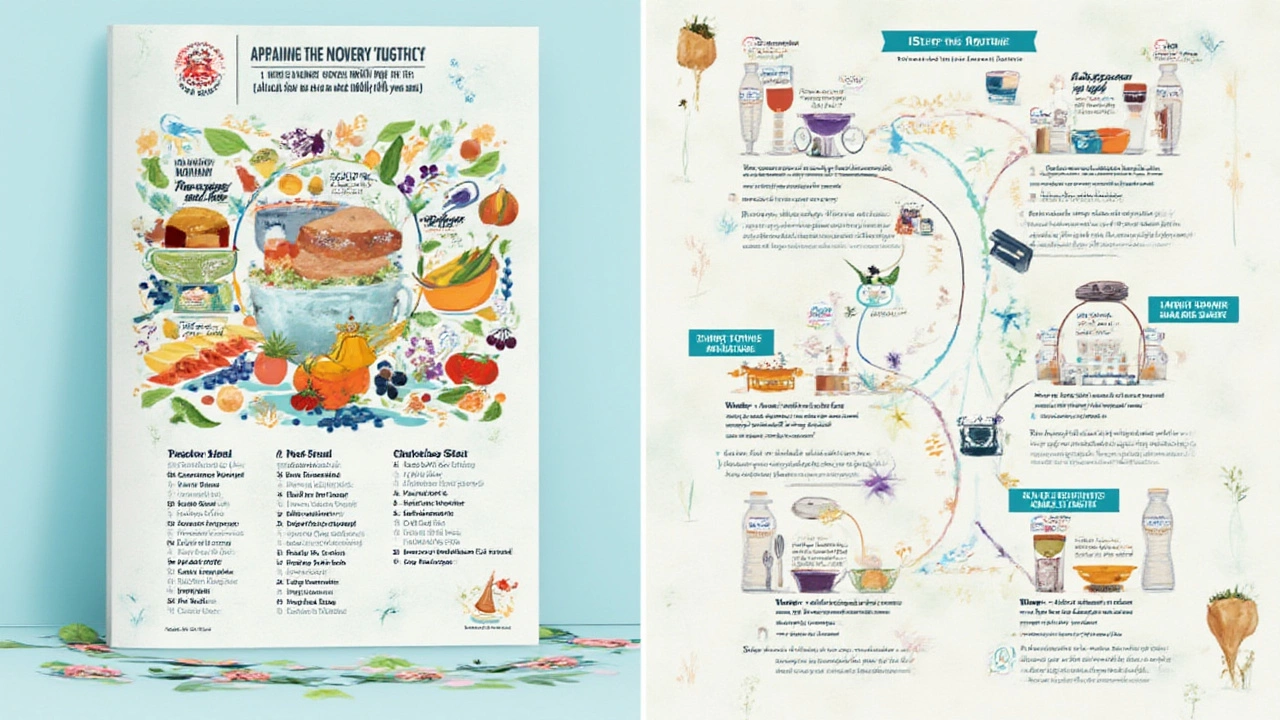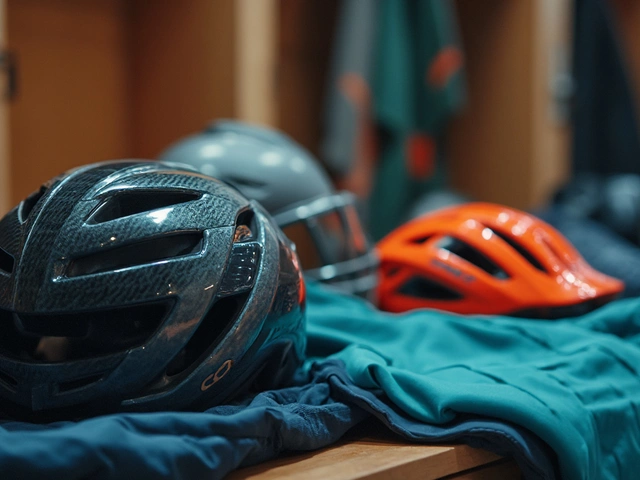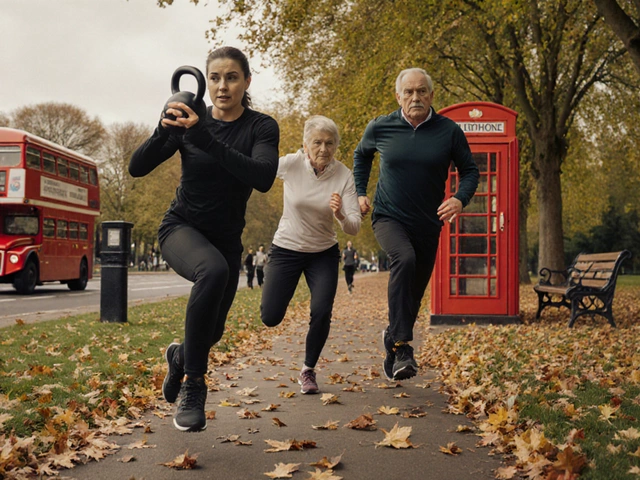It’s wild how many times you’ll hear that grit and talent carry athletes to victory. But look closer—behind every record-breaker, there’s a secret sauce. It’s not just about who can run fastest, hit hardest, or jump highest. Two absolutely crucial needs rise above the rest: smart nutrition and effective recovery. Without nailing these, even the most gifted athletes burn out, get injured, or hit frustrating plateaus. Just ask any coach or sports doc worth their salt—this stuff never gets old, because it’s what really makes or breaks performance. The numbers back it up, too. The best sports programs? They spend as much energy perfecting meal plans and recovery routines as they do on drills or scrimmages. If you play, train, or even just watch obsessively, here’s what you need to know about the fuel and rest that keep great athletes in the game and at their best.
Unlocking the Power of Nutrition
Nutrition is where the engine gets its fuel—plain and simple. Except, of course, it’s anything but simple once you start digging into it. Think about this: studies with Olympic-level track teams showed that tailored nutrition brought 15-20% performance gains over generic meal plans. That’s the difference between a podium and a regular Sunday workout. But it’s not just about eating ‘healthy’ or grabbing whatever protein bar is trending. The right mix of carbs, protein, and fats (not to mention hydration, vitamins, and minerals) literally powers muscles, sharpens focus, speeds up reactions, and bolsters recovery.
Here’s a breakdown from top-tier sports nutritionists:
| Component | Key Role |
|---|---|
| Carbohydrates | Immediate energy for muscles and sustained endurance |
| Protein | Muscle repair, growth, hormone regulation |
| Fats | Long-term energy and cell health |
| Vitamins/Minerals | Enzyme functions, bone health, immunity |
| Hydration | Maintains blood flow, temperature, joint health |
Athletes can’t just grab whatever’s in the fridge. They need a plan. Some go as far as mapping out every meal and snack for weeks in advance, and there’s good reason—one day of bad fueling, and you feel heavy, slow, or flat. Before races, pros often carb-load, but the science shows it’s not just about ‘slamming pasta’ the night before. You have to top up muscle glycogen for days, balance fluids (hello, electrolytes!), and time meals to give your gut a chance to process everything. Remember NBA stars cramping up on national TV? That’s almost always a sign the nutrition side got missed.
And don’t even get started on protein myths. Yes, muscle heads love their shakes, but consistently hitting the 1.2-2.0g protein per kg of bodyweight, as recommended by most sports scientists, is what rebuilds torn-up muscle after hard sessions. Going overboard can actually mess with your kidneys or crowd out other nutrients you need. Then there are micronutrients—iron carries oxygen in the blood; calcium keeps bones strong; zinc bumps your immune system up a notch. Ignore these, and injuries or sickness creep in fast. This is exactly why every elite sports team now has a dedicated dietitian who tweaks everything, even down to when to have caffeine, beetroot juice, or a little dark chocolate for anti-oxidants.
If you want a quick win in your own regimen, start by tracking your water. A 2% drop in body weight from dehydration cuts power by almost 10%. Thirst isn’t a good marker—by the time you’re dry-mouthed, you’re already underperforming. So, fill that bottle and sip steadily, especially when it’s hot, humid, or you’re training hard. And your recovery? Nutrition is the start of that, too—replacing lost glycogen and amino acids quickly gets you set for the next session.
The Science (and Art) of Recovery
If fueling up is half of it, recovery is the other half—and it’s way more than just sleep or rest days. Here’s the thing: no matter how hard you train, you only get stronger if you let your body repair. Top-tier soccer teams use GPS, heart rate monitors, and even blood tests to track recovery readiness—because pushing too hard when you’re not fully recovered? That’s the shortcut to pulled hamstrings and month-long layoffs.
Ever notice how the world’s best athletes seem to spring back after brutal games? That’s not genetics alone. It’s deep attention to post-exertion recovery. Some facts to chew on: research out of the University of Texas found that athletes who used structured recovery methods bounced back 30% faster, performed better under pressure, and suffered far fewer soft-tissue injuries.
What does real recovery look like? It’s smart sleep schedules (7-9 hours a night for most adults, but pros often nap during the day too). It’s active recovery—light swims, yoga, or even a short ride to flush toxins from sore muscles. Then there’s the wild world of cold plunges, foam rolling, compression boots, and massages. Yes, the high-end stuff works, but simple things like getting off your feet, stretching, or walking your dog after a game have benefits, too.
Some recovery tips that actually work:
- Don’t skip the post-training meal: Fast carbs plus protein triggers rapid muscle repair.
- Stay hydrated: Water moves waste products out of muscles and speeds up healing.
- Get enough sleep: Growth hormone rises most during deep sleep—critical for tissue repair.
- Use active recovery: Walking, slow cycling, or gentle swimming keeps blood moving and limits soreness.
- Try cold therapy if you’re sore: A cool shower, ice bath, or even a bag of peas on sore spots can reduce swelling and pain.
There’s a reason NBA, NFL, and Premier League teams now employ sleep coaches and hire massage therapists full-time. And the numbers show up—European soccer teams that invested more in recovery tech saw a 20% drop in injury rates over two seasons. If you’re looking for a magic bullet, know this: skipping recovery is like skipping practice. Your body will catch you out, sooner or later.

Mental Energy: The Third Wheel
You can’t talk nutrition and recovery without one more piece of the puzzle: the head game. Yeah, some would argue it’s an ‘extra’ need, but any athlete who’s made it through injury, setbacks, or big losses will tell you—mental energy is not optional. The best fuel and recovery won’t help if your brain’s fried from stress, nerves, or bad sleep. But here’s the twist: the right nutrition and the right recovery boost your mental game, too.
Let’s get specific. Ever noticed how a junk food binge leaves you cranky and unfocused the next day? That’s blood sugar and neurotransmitters taking a hit—and your brain is just as dependent on good fuel as your biceps or quads. The link is so strong, the NCAA now runs programs teaching college athletes about brain nutrition alongside regular diet advice. They show that students who keep blood sugar stable perform almost 15% better on memory and focus tests after a season. That’s not a fluke; it’s biology working for you, not against you.
The same goes for recovery. High stress? Poor sleep? You make slower decisions and risk burnout. Australian sports science journals even recommend ‘mindful rest’—not just lying on the couch, but activities that dial down the nervous system. Stuff like meditation, focused breathing, or even simple gratitude journaling now gets prescribed alongside stretching and protein shakes. And it’s not woo-woo: cortisol, the stress hormone, crashes recovery if it stays high, and spiking it with non-stop anxiety or pressure is a surefire way to hit the wall early in your career.
One practical tip: treat your mental health routines just like you do warmups or cooldowns. Block it out on your schedule, try different things to see what sticks (for wife Lara, that means evening walks, for me, it’s blasting guitar riffs), and know that a strong head is a trained head. If you want long-term success, those mental recharges will prop up the foundation just as much as protein shakes and deep sleep.
Putting It All Together: The Athlete’s Daily Blueprint
So what does layering nutrition and recovery into a daily life actually look like? Top athletes guard their routines like gold because inconsistency takes away all the small advantages they work so hard to stack. Regularity is king. Here’s a typical daily flow, based on interviews with pro sports nutritionists and strength coaches:
- Early hydration: a big glass of water as soon as you wake up, ideally with a slice of lemon or a pinch of sea salt for electrolytes
- Balanced breakfast: oats with berries and Greek yogurt (carbs, protein, antioxidants)
- Training session: pre-session snack (banana or toast with nut butter for quick energy)
- During training: sip on water or an electrolyte drink, three sips every 10-15 minutes
- Post-training: within 30 minutes, a mix of fast carbs (like fruit or a sports drink) and protein (whey shake or chicken wrap)
- Lunch and dinner: 1/2 plate veggies, 1/4 lean protein, 1/4 whole grains, with olive oil or avocado for healthy fats
- Snacks: nuts, apples, cheese sticks, or homemade energy balls—steady energy, no sugar crash
- Active recovery: walk, stretch, or a gentle swim in the early evening
- Wind-down routine: screens off an hour before bed, maybe herbal tea, some light reading or a breathing exercise
- Bedtime: aim for a solid 8 hours, with blackout curtains and a cool, quiet room
Stick with a routine like that, and you’ll stay fueled, recovered, and mentally sharp. Plus, you’ll spot issues quicker—when a meal or nap gets missed, you’ll notice the results instantly. The little tweaks add up, too: swapping sodas for water, adding chia seeds to smoothies, or making time for a midday walk instead of mindlessly scrolling your feed pays massive dividends by season’s end.

Practical Facts and Tips Every Athlete Needs
We’ve seen it: you can’t fake your way through athlete needs. To really crush training goals, you have to play the long game. Here are some rapid-fire facts and tips “from the field” (and the kitchen, and the ice bath):
- Sports drinks aren’t always necessary—if your average session is under 60 min and not hyper-intense or in crazy-heat, water usually does the job.
- Color-coded urine charts in locker rooms aren’t a joke—they seriously help athletes eyeball hydration on the fly. Pale straw color is what you’re shooting for.
- Timing matters: the ‘anabolic window’ for muscle regrowth is real but flexible—just don’t wait hours after a workout to eat.
- Don’t fear sodium if you sweat heavy—runners in summer can lose 1g+ sodium per liter of sweat. That’s why some add a pinch to water bottles on double-session days.
- Traveling for games? Pack tried-and-true snacks. Several World Cup teams report their nutrition plans get derailed fast if they don’t control their food on the road.
- Power naps work wonders. Twenty minutes after lunch can sharpen focus for evening training.
- If you get night sweats, or wake up sore every day, it could be a recovery problem—try an extra hour of sleep and cut caffeine after 2pm to see if that helps.
- During tough streaks (injury or performance drops), stay in touch with your squad—social support speeds recovery and keeps the mental game strong.
- Simplest tweak: meal prep. Spend 1-2 hours Sunday night prepping grab-and-go meals so you never have to choose between eating right and running late for practice.
No one who’s made it big skipped the basics. Nail your food, sleep, and rest game—then watch every other part of your performance fall into place. Raw talent matters. But the two non-negotiable needs—proper nutrition and disciplined recovery—are what take you from weekend warrior to lifelong competitor.








